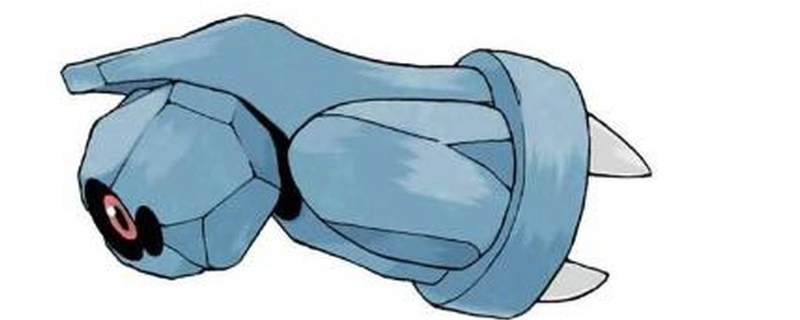Java正则表达式
时间:2010-04-04 来源:huanghaojie
Java正则表达式 收藏
正则表达式在处理文本方面用处非常大,最早像在Perl和awk语言中,提供了这种机制,Java在Java 2中也增加了正则表达式这个包java.util.regex。这个包为用户使用正则表达式,提供了易用而全面的支持。我的研究方向是web挖掘。从网页中提取内容,处理文本,当然需要正则表达式这个强大的工具了。
一、首先我们看一下怎么使用正则表达式的一个例子:
A Matcher examines the results of applying a pattern.
我们希望从这句话中找到所有开头为a的单词。
当然这只是一个简单的例子,你可以使用String提供的split方法,得到单词数组,然后
遍历各个单词看是否是否开头为a
我们现在看看怎么使用正则表达式来处理这个问题:
Java代码
import java.util.regex.*;
public class FindA{
public static void main(String args[])
throws Exception{
String candidate =
"A Matcher examines the results of applying a pattern.";
String regex = "\\ba\\w*\\b";
Pattern p = Pattern.compile(regex);
Matcher m = p.matcher(candidate);
String val = null;
System.out.println("INPUT: " + candidate);
System.out.println("REGEX: " + regex +"\r\n");
while (m.find()){
val = m.group();
System.out.println("MATCH: " + val);
}
if (val == null) {
System.out.println("NO MATCHES: ");
}
}
}
import java.util.regex.*;
public class FindA{
public static void main(String args[])
throws Exception{
String candidate =
"A Matcher examines the results of applying a pattern.";
String regex = "\\ba\\w*\\b";
Pattern p = Pattern.compile(regex);
Matcher m = p.matcher(candidate);
String val = null;
System.out.println("INPUT: " + candidate);
System.out.println("REGEX: " + regex +"\r\n");
while (m.find()){
val = m.group();
System.out.println("MATCH: " + val);
}
if (val == null) {
System.out.println("NO MATCHES: ");
}
}
}
从这个例子我们可以看到正则表达式涉及到的两个类Matcher和Pattern,我们以后会专门讨论着连个类。现在主要看看使用正则表达式的流程:
首先使用 Pattern的一个静态的方法compile来创建Pattern对象,
Java代码
Pattern p = Pattern.compile(regex);
Pattern p = Pattern.compile(regex);
然后调用Pattern的方法matcher
Java代码
Matcher m = p.matcher(candidate);
Matcher m = p.matcher(candidate);
得到了Matcher对象,Matcher对象保存了许多匹配信息,然后可以通过find()方法
查找匹配的部分,如果有匹配的部分,返回真,使用m.group方法得到匹配的各组值,
否则find返回false.
当然这只是一般的过程,还有许多更细的方法,在以后会陆续的总结,下面我们看一下
Java代码
String regex = "\\ba\\w*\\b";
String regex = "\\ba\\w*\\b";
这个就是一个正则表达式,b,w,*都是正则表达式的meta character原字符,
\b表示单词的边界,w表示任意的可构成单词的字母数字,*表示前面的字母(当然可以
是更复杂的组之类的了东东)重复0次或0次以上,a当然还是a了。所以这个regex就
匹配单词开头为a的单词了。
二、下面总结一下基本的正则表达式的meta character以及它们含义:
. 匹配任意一个字符 $ 匹配一行的结尾 ^ 匹配一行的开头(在[]里面表示否定)
{} 定义了一个范围 [] 定义了一个字符类 () 定义了一个组
*前面出现0次以上 + 前面匹配一次以上 ?前面出现0次或一次
\ 后面的字符不会看作metacharacter \w 字母数字下划线 \W 非字母数字下划线
\d 单个数字 \D单个非数字 | 或,二者之一 &&与操作符 \b单词边界
下面看看几个简单的例子:
[abc] a、b 或 c(简单类)
[^abc] 任何字符,除了a、b 或 c(否定)
[a-zA-Z] a 到 z 或 A 到 Z,两头的字母包括在内(范围)
[a-d[m-p]] a 到 d 或 m 到 p:[a-dm-p](并集)
[a-z&&[def]] d、e 或 f(交集)
[a-z&&[^bc]] a 到 z,除了 b 和 c:[ad-z](减去)
[a-z&&[^m-p]] a 到 z,而非 m 到 p:[a-lq-z](减去)
三、java.util.regex提供的操作接口:
java.util.regex包提供了操作正则表达式的模型,整个模型优雅而简洁,只有三个类:Pattern、Matcher和
PatternSyntaxException。下面将要总结他们提供的方法,以及如何灵活应用来处理文本。
我们还是从Pattern的静态工厂方法来扩展吧:
Java代码
static Pattern compile(String regex)
static Pattern compile(String regex)
将给定的正则表达式编译到模式中,并创建Pattern对象,这个方法通常是操作正则表达式的第一步,从前面那个例子
我们也可以看到整个的流程。
在看看一个重载的compile方法:
Java代码
static Pattern compile(String regex, int flags)
static Pattern compile(String regex, int flags)
将给定的正则表达式编译到具有给定标志的模式中。 这个方法参数flags提供了一些特殊的选项来用于特殊的处理,
我们下面看看可使用的选项:
UNIX_LINES:这个主要处理UNIX和其他的操作系统在行结束符不一样的问题,UNIX使用\n代表一行的终止,而Windows
则使用了\r\n,\n,\r,\u2028或者\u0085作为一行的结束符。
CASE_INSENSITIVE:当我们在匹配的时候要忽略字符大小写时
COMMENTS:允许我们在正则表达式中使用注释,例如
Java代码
Pattern p =Pattern.compile("A #matches uppercase US-ASCII char code 65",Pattern.COMMENTS);
Pattern p =Pattern.compile("A #matches uppercase US-ASCII char code 65",Pattern.COMMENTS);
MULTILINE:表明要输入多行,他们有自己的终止字符。
Java代码
Pattern p = Pattern.compile("^", Pattern.MULTILINE);
Pattern p = Pattern.compile("^", Pattern.MULTILINE);
如果你的输入的字符串是:This is a sentence.\n So is this..
这样我们匹配的字符时This中的T和So中的S,如果不使用MULTILINE,则只会匹配T
DOTALL:使用这个选项之后metacharacter .就可以包括一行的终止字符了,如果没有这个选项,
一行的终止字符,并不会考虑在字符串之内的。
使用这个选项会降低效率
Java代码
Pattern p = Pattern.compile(".", Pattern.DOTALL);
Pattern p = Pattern.compile(".", Pattern.DOTALL);
如果我们输入的是Test\n,则匹配的字符是5个。
UNICODE_CASE:处理UNICODE字符集,使用这个选项会降低效率
CANON_EQ:一个字符的实际存储形式是经过编码后的数字,使用CANON_EQ选项就可以匹配一个字母在各种编码了。
例如a可以匹配+00E0和U+0061U+0300
使用这个选项会降低效率
我们可以组合以上选项,只要使用|,进行按位或操作即可
Java代码
Pattern p =
Pattern.compile("t # a compound flag example",Pattern.CASE_INSENSITIVE | Pattern.UNICODE_CASE|
Pattern.COMMENT);
Pattern p =
Pattern.compile("t # a compound flag example",Pattern.CASE_INSENSITIVE | Pattern.UNICODE_CASE|
Pattern.COMMENT);
我们还要注意点的时Java对转译字符\的处理,例如我们要匹配一个数字:
我们不能使用:
Java代码
Pattern p = Pattern.compile("\d");
Pattern p = Pattern.compile("\d");
而是:
Java代码
Pattern p = Pattern.compile("\\d");
Pattern p = Pattern.compile("\\d");
另外如果regex本身形式是错误的,compile方法会抛出java.util.regex.PatternSyntaxException异常。
下面我们总结一下public Matcher matcher(CharSequence input)方法:
当我们使用compile操作,创建了Pattern对象之后,我们就可以使用Pattern对象的matcher操作,生成
matcher对象了,Matcher对象包含了许多对匹配结果集的操作,我们在总结Matcher对象的时候再说。另外
顺便提一下参数CharSequence,CharBuffer, Segment, String, StringBuffer, StringBuilder 都实现了
这个接口,所以参数可以是这些中的任一种类型了。
下面我们看看:
Java代码
public int flags()
public int flags()
这个方法返回了我们前面可以设置的并且已经设置的flags选项,我们通过按位与来判断是否设置了某个选项:
Java代码
int flgs = myPattern.flags();
boolean isUsingCommentFlag =( Pattern.COMMENTS == (Pattern.COMMENTS & flgs)) ;
int flgs = myPattern.flags();
boolean isUsingCommentFlag =( Pattern.COMMENTS == (Pattern.COMMENTS & flgs)) ;
看看一个简化过程的方法:
Java代码
public static boolean matches (String regex,CharSequence input)
public static boolean matches (String regex,CharSequence input)
这个方法实际上是:
Java代码
Pattern p = Pattern.compile(regex);
Matcher m = p.matcher(candidate);
m.matches()
Pattern p = Pattern.compile(regex);
Matcher m = p.matcher(candidate);
m.matches()
过程的一个简化,我们在后面总结Matcher中的matches方法之后就会理解这个了。
想必我们经常使用把字符串提取出token变成字符串数组的String中的split方法吧,下面我们看看
类似的一个方法:
public String[] split(CharSequence input)
这个方法提供了强大的功能,因为它可以使用正则表达式来作为token的分割:
Java代码
Pattern p = new Pattern.compile(",|and");
String fruits[] = p.split("apple,banana and orange");
Pattern p = new Pattern.compile(",|and");
String fruits[] = p.split("apple,banana and orange");
split的一个重载的版本:
Java代码
public String[] split(CharSequence input, int limit)
public String[] split(CharSequence input, int limit)
它指定了划分的组数,有以下三种情况:
limit==0
这时候和没有limit参数的那个split效果一样
limit>0
如果你仅仅对前limit个感兴趣,你可以使用limit:
Java代码
String[] tmp = pattern.split("Hello, Dolly, You, Are, My, Favorite",3);
//tmp[0] is "Hello",
// tmp[1] is "Dolly";
//tmp[2] is "You, Are, My, Favorite";
String[] tmp = pattern.split("Hello, Dolly, You, Are, My, Favorite",3);
//tmp[0] is "Hello",
// tmp[1] is "Dolly";
//tmp[2] is "You, Are, My, Favorite";
limit<0
会尽可能的划分所有的组,即使分割符后面是个空字符,也要单独生成一个token:""
Java代码
Pattern p = Pattern.compile(",");
String temp[] = p.split("Hello,Dolly,", -1);
//temp[]={"Hello","Dolly",""}
Java正则表达式(二)
关键字: java regex, regular expression
Matcher类:
使用Matcher类,最重要的一个概念必须清楚:组(Group),在正则表达式中
()定义了一个组,由于一个正则表达式可以包含很多的组,所以下面先说说怎么划分组的,
以及这些组和组的下标怎么对应的.
下面我们看看一个小例子,来说明这个问题
引用
\w(\d\d)(\w+)
这个正则表达式有三个组:
整个\w(\d\d)(\w+) 是第0组 group(0)
(\d\d)是第1组 group(1)
(\w+)是第2组 group(2)
我们看看和正则表达式匹配的一个字符串x99SuperJava,
group(0)永远都是匹配整个表达式的字符串的那部分x99SuperJava
group(1)是第1组(\d\d)匹配的部分:99
group(2)是第二组(\w+)匹配的那部分SuperJava
下面我们写一个程序来验证一下:
Java代码
package edu.jlu.fuliang;
import java.util.regex.Matcher;
import java.util.regex.Pattern;
public class RegexTest {
public static void main(String[] args) {
String regex = "\\w(\\d\\d)(\\w+)";
String candidate = "x99SuperJava";
Pattern p = Pattern.compile(regex);
Matcher matcher = p.matcher(candidate);
if(matcher.find()){
int gc = matcher.groupCount();
for(int i = 0; i <= gc; i++)
System.out.println("group " + i + " :" + matcher.group(i));
}
}
}
package edu.jlu.fuliang;
import java.util.regex.Matcher;
import java.util.regex.Pattern;
public class RegexTest {
public static void main(String[] args) {
String regex = "\\w(\\d\\d)(\\w+)";
String candidate = "x99SuperJava";
Pattern p = Pattern.compile(regex);
Matcher matcher = p.matcher(candidate);
if(matcher.find()){
int gc = matcher.groupCount();
for(int i = 0; i <= gc; i++)
System.out.println("group " + i + " :" + matcher.group(i));
}
}
}
输出结果:
引用
group 0 :x99SuperJava
group 1 :99
group 2 :SuperJava
下面我们看看Matcher类提供的方法:
public Pattern pattern()
这个方法返回了,创建Matcher的那个pattern对象。
下面我们看看一个小例子来说明这个结果
Java代码
import java.util.regex.*;
public class MatcherPatternExample{
public static void main(String args[]){
test();
}
public static void test(){
Pattern p = Pattern.compile("\\d");
Matcher m1 = p.matcher("55");
Matcher m2 = p.matcher("fdshfdgdfh");
System.out.println(m1.pattern() == m2.pattern());
//return true
}
}
import java.util.regex.*;
public class MatcherPatternExample{
public static void main(String args[]){
test();
}
public static void test(){
Pattern p = Pattern.compile("\\d");
Matcher m1 = p.matcher("55");
Matcher m2 = p.matcher("fdshfdgdfh");
System.out.println(m1.pattern() == m2.pattern());
//return true
}
}
public Matcher reset()
这个方法将Matcher的状态重新设置为最初的状态。
public Matcher reset(CharSequence input)
重新设置Matcher的状态,并且将候选字符序列设置为input后进行Matcher,
这个方法和重新创建一个Matcher一样,只是这样可以重用以前的对象。
public int start()
这个方法返回了,Matcher所匹配的字符串在整个字符串的的开始下标:
下面我们看看一个小例子
Java代码
public class MatcherStartExample{
public static void main(String args[]){
test();
}
public static void test(){
//create a Matcher and use the Matcher.start() method
String candidateString = "My name is Bond. James Bond.";
String matchHelper[] =
{" ^"," ^"};
Pattern p = Pattern.compile("Bond");
Matcher matcher = p.matcher(candidateString);
//Find the starting point of the first 'Bond'
matcher.find();
int startIndex = matcher.start();
System.out.println(candidateString);
System.out.println(matchHelper[0] + startIndex);
//Find the starting point of the second 'Bond'
matcher.find();
int nextIndex = matcher.start();
System.out.println(candidateString);
System.out.println(matchHelper[1] + nextIndex);
}
public class MatcherStartExample{
public static void main(String args[]){
test();
}
public static void test(){
//create a Matcher and use the Matcher.start() method
String candidateString = "My name is Bond. James Bond.";
String matchHelper[] =
{" ^"," ^"};
Pattern p = Pattern.compile("Bond");
Matcher matcher = p.matcher(candidateString);
//Find the starting point of the first 'Bond'
matcher.find();
int startIndex = matcher.start();
System.out.println(candidateString);
System.out.println(matchHelper[0] + startIndex);
//Find the starting point of the second 'Bond'
matcher.find();
int nextIndex = matcher.start();
System.out.println(candidateString);
System.out.println(matchHelper[1] + nextIndex);
}
输出结果:
My name is Bond. James Bond.
^11
My name is Bond. James Bond.
^23
public int start(int group)
这个方法可以指定你感兴趣的sub group,然后返回sup group匹配的开始位置。
public int end()
这个和start()对应,返回在以前的匹配操作期间,由给定组所捕获子序列的最后字符之后的偏移量。
其实start和end经常是一起配合使用来返回匹配的子字符串。
public int end(int group)
和public int start(int group)对应,返回在sup group匹配的子字符串最后一个字符在整个字符串下标加一
public String group()
返回由以前匹配操作所匹配的输入子序列。
这个方法提供了强大而方便的工具,他可以等同使用start和end,然后对字符串作substring(start,end)操作。
看看下面一个小例子:
Java代码
import java.util.regex.*;
public class MatcherGroupExample{
public static void main(String args[]){
test();
}
public static void test(){
//create a Pattern
Pattern p = Pattern.compile("Bond");
//create a Matcher and use the Matcher.group() method
String candidateString = "My name is Bond. James Bond.";
Matcher matcher = p.matcher(candidateString);
//extract the group
matcher.find();
System.out.println(matcher.group());
}
}
import java.util.regex.*;
public class MatcherGroupExample{
public static void main(String args[]){
test();
}
public static void test(){
//create a Pattern
Pattern p = Pattern.compile("Bond");
//create a Matcher and use the Matcher.group() method
String candidateString = "My name is Bond. James Bond.";
Matcher matcher = p.matcher(candidateString);
//extract the group
matcher.find();
System.out.println(matcher.group());
}
}
public String group(int group)
这个方法提供了强大而方便的工具,可以得到指定的group所匹配的输入字符串
应为这两个方法经常使用,同样我们看一个小例子:
Java代码
import java.util.regex.*;
public class MatcherGroupParamExample{
public static void main(String args[]){
test();
}
public static void test(){
//create a Pattern
Pattern p = Pattern.compile("B(ond)");
//create a Matcher and use the Matcher.group(int) method
String candidateString = "My name is Bond. James Bond.";
//create a helpful index for the sake of output
Matcher matcher = p.matcher(candidateString);
//Find group number 0 of the first find
matcher.find();
String group_0 = matcher.group(0);
String group_1 = matcher.group(1);
System.out.println("Group 0 " + group_0);
System.out.println("Group 1 " + group_1);
System.out.println(candidateString);
//Find group number 1 of the second find
matcher.find();
group_0 = matcher.group(0);
group_1 = matcher.group(1);
System.out.println("Group 0 " + group_0);
System.out.println("Group 1 " + group_1);
System.out.println(candidateString);
}
}
import java.util.regex.*;
public class MatcherGroupParamExample{
public static void main(String args[]){
test();
}
public static void test(){
//create a Pattern
Pattern p = Pattern.compile("B(ond)");
//create a Matcher and use the Matcher.group(int) method
String candidateString = "My name is Bond. James Bond.";
//create a helpful index for the sake of output
Matcher matcher = p.matcher(candidateString);
//Find group number 0 of the first find
matcher.find();
String group_0 = matcher.group(0);
String group_1 = matcher.group(1);
System.out.println("Group 0 " + group_0);
System.out.println("Group 1 " + group_1);
System.out.println(candidateString);
//Find group number 1 of the second find
matcher.find();
group_0 = matcher.group(0);
group_1 = matcher.group(1);
System.out.println("Group 0 " + group_0);
System.out.println("Group 1 " + group_1);
System.out.println(candidateString);
}
}
public int groupCount()
这个方法返回了,正则表达式的匹配的组数。
public boolean matches()
尝试将整个区域与模式匹配。这个要求整个输入字符串都要和正则表达式匹配。
和find不同, find是会在整个输入字符串查找匹配的子字符串。
public boolean find()
find会在整个输入中寻找是否有匹配的子字符串,一般我们使用find的流程:
Java代码
while(matcher.find()){
//在匹配的区域,使用group,replace等进行查看和替换操作
}
while(matcher.find()){
//在匹配的区域,使用group,replace等进行查看和替换操作
}
public boolean find(int start)
从输入字符串指定的start位置开始查找。
public boolean lookingAt()
基本上是matches更松约束的一个方法,尝试将从区域开头开始的输入序列与该模式匹配
public Matcher appendReplacement (StringBuffer sb, String replacement)
你想把My name is Bond. James Bond. I would like a martini中的Bond换成Smith
Java代码
StringBuffer sb = new StringBuffer();
String replacement = "Smith";
Pattern pattern = Pattern.compile("Bond");
Matcher matcher =pattern.matcher("My name is Bond. James Bond. I would like a martini.");
while(matcher.find()){
matcher.appendReplacement(sb,replacement);//结果是My name is Smith. James Smith
}
StringBuffer sb = new StringBuffer();
String replacement = "Smith";
Pattern pattern = Pattern.compile("Bond");
Matcher matcher =pattern.matcher("My name is Bond. James Bond. I would like a martini.");
while(matcher.find()){
matcher.appendReplacement(sb,replacement);//结果是My name is Smith. James Smith
}
Matcher对象会维护追加的位置,所以我们才能不断地使用appendReplacement来替换所有的匹配。
public StringBuffer appendTail(StringBuffer sb)
这个方法简单的把为匹配的结尾追加到StringBuffer中。在上一个例子的最后再加上一句:
matcher.appendTail(sb);
结果就会成为My name is Smith. James Smith. I would like a martini.
public String replaceAll(String replacement)
这个是一个更方便的方法,如果我们想替换所有的匹配的话,我们可以简单的使用replaceAll就ok了。
是:
Java代码
while(matcher.find()){
matcher.appendReplacement(sb,replacement);//结果是My name is Smith. James Smith
}
matcher.appendTail(sb);
while(matcher.find()){
matcher.appendReplacement(sb,replacement);//结果是My name is Smith. James Smith
}
matcher.appendTail(sb);
的更便捷的方法。
Java代码
public String replaceFirst(String replacement)
public String replaceFirst(String replacement)
这个与replaceAll想对应很容易理解,就是只替换第一个匹配的。
[size=12px]1。^\d+$ //匹配非负整数(正整数 + 0)
2。^[0-9]*[1-9][0-9]*$ //匹配正整数
3。^((-\d+)|(0+))$ //匹配非正整数(负整数 + 0)
4。^-[0-9]*[1-9][0-9]*$ //匹配负整数
5。^-?\d+$ //匹配整数
6。^\d+(\.\d+)?$ //匹配非负浮点数(正浮点数 + 0)
7。^(([0-9]+\.[0-9]*[1-9][0-9]*)|([0-9]*[1-9][0-9]*\.[0-9]+)|([0-9]*[1-9][0-9]*))$ //匹配正浮点数
8。^((-\d+(\.\d+)?)|(0+(\.0+)?))$ //匹配非正浮点数(负浮点数 + 0)
9。^(-(([0-9]+\.[0-9]*[1-9][0-9]*)|([0-9]*[1-9][0-9]*\.[0-9]+)|([0-9]*[1-9][0-9]*)))$ //匹配负浮点数
10。^(-?\d+)(\.\d+)?$ //匹配浮点数
11。^[A-Za-z]+$ //匹配由26个英文字母组成的字符串
12。^[A-Z]+$ //匹配由26个英文字母的大写组成的字符串
13。^[a-z]+$ //匹配由26个英文字母的小写组成的字符串
14。^[A-Za-z0-9]+$ //匹配由数字和26个英文字母组成的字符串
15。^\w+$ //匹配由数字、26个英文字母或者下划线组成的字符串
16。^[\w-]+(\.[\w-]+)*@[\w-]+(\.[\w-]+)+$ //匹配email地址
17。^[a-zA-z]+://匹配(\w+(-\w+)*)(\.(\w+(-\w+)*))*(\?\S*)?$ //匹配url
18。匹配中文字符的正则表达式: [\u4e00-\u9fa5]
19。匹配双字节字符(包括汉字在内):[^\x00-\xff]
20。应用:计算字符串的长度(一个双字节字符长度计2,ASCII字符计1)
String.prototype.len=function(){return this.replace([^\x00-\xff]/g,"aa").length;}
21。匹配空行的正则表达式:\n[\s| ]*\r
22。匹配HTML标记的正则表达式:/<(.*)>.*<\/\1>|<(.*) \/>/
23。匹配首尾空格的正则表达式:(^\s*)|(\s*$)
* 正则表达式用例
* 1、^\S+[a-z A-Z]$ 不能为空 不能有空格 只能是英文字母
* 2、\S{6,} 不能为空 六位以上
* 3、^\d+$ 不能有空格 不能非数字
* 4、(.*)(\.jpg|\.bmp)$ 只能是jpg和bmp格式
* 5、^\d{4}\-\d{1,2}-\d{1,2}$ 只能是2004-10-22格式
* 6、^0$ 至少选一项
* 7、^0{2,}$ 至少选两项
* 8、^[\s|\S]{20,}$ 不能为空 二十字以上
* 9、^\+?[a-z0-9](([-+.]|[_]+)?[a-z0-9]+)*@([a-z0-9]+(\.|\-))+[a-z]{2,6}$邮件
* 10、\w+([-+.]\w+)*@\w+([-.]\w+)*\.\w+([-.]\w+)*([,;]\s*\w+([-+.]\w+)*@\w+([-.]\w+)*\.\w+([-.]\w+)*)* 输入多个地址用逗号或空格分隔邮件
* 11、^(\([0-9]+\))?[0-9]{7,8}$电话号码7位或8位或前面有区号例如(022)87341628
* 12、^[a-z A-Z 0-9 _]+@[a-z A-Z 0-9 _]+(\.[a-z A-Z 0-9 _]+)+(\,[a-z A-Z 0-9 _]+@[a-z A-Z 0-9 _]+(\.[a-z A-Z 0-9 _]+)+)*$
* 只能是字母、数字、下划线;必须有@和.同时格式要规范 邮件
* 13 ^\w+@\w+(\.\w+)+(\,\w+@\w+(\.\w+)+)*$上面表达式也可以写成这样子,更精练。
14 ^\w+((-\w+)|(\.\w+))*\@\w+((\.|-)\w+)*\.\w+$ [/size]
21。匹配空行的正则表达式:\n[\s ¦ ]*\r
21。匹配空行的正则表达式:/^\s*$/m
22。匹配HTML标记的正则表达式:/ <(.*)>.* <\/\1> ¦ <(.*)\/>/
22。匹配HTML标记的正则表达式:/ <([^>]+)>[^ <>]* <\/\1> ¦ <([^>]+)\/>/
这个实际上作用不大,因为正则表达式不能支持嵌套匹配,仅 .NET 的表达式引擎有这个功能。
23。匹配首尾空格的正则表达式:(^\s*) ¦(\s*$)
23。匹配首尾空格的正则表达式:^\s+ ¦\s+$
为 JavaScript 的 String 增加 trim() 函数:
String.prototype.trim = function() {
return this.replace(/^\s+/, '').replace(/\s+$/, '');
}
* 4、(.*)(\.jpg ¦\.bmp)$ 只能是jpg和bmp格式
* 8、^[\s ¦\S]{20,}$ 不能为空 二十字以上
匹配中文字符的正则表达式: [\u4e00-\u9fa5]
评注:匹配中文还真是个头疼的事,有了这个表达式就好办了
匹配双字节字符(包括汉字在内):[^\x00-\xff]
评注:可以用来计算字符串的长度(一个双字节字符长度计2,ASCII字符计1)
匹配空白行的正则表达式:\n\s*\r
评注:可以用来删除空白行
匹配HTML标记的正则表达式: <(\S*?)[^>]*>.*? ¦ <.*? />
评注:网上流传的版本太糟糕,上面这个也仅仅能匹配部分,对于复杂的嵌套标记依旧无能为力
匹配首尾空白字符的正则表达式:^\s* ¦\s*$
评注:可以用来删除行首行尾的空白字符(包括空格、制表符、换页符等等),非常有用的表达式
匹配Email地址的正则表达式:\w+([-+.]\w+)*@\w+([-.]\w+)*\.\w+([-.]\w+)*
评注:表单验证时很实用
匹配网址URL的正则表达式:[a-zA-z]+://[^\s]*
评注:网上流传的版本功能很有限,上面这个基本可以满足需求
匹配帐号是否合法(字母开头,允许5-16字节,允许字母数字下划线):^[a-zA-Z][a-zA-Z0-9_]{4,15}$
评注:表单验证时很实用
匹配国内电话号码:\d{3}-\d{8} ¦\d{4}-\d{7}
评注:匹配形式如 0511-4405222 或 021-87888822
匹配腾讯QQ号:[1-9][0-9]{4,}
评注:腾讯QQ号从10000开始
匹配中国邮政编码:[1-9]\d{5}(?!\d)
评注:中国邮政编码为6位数字
匹配身份证:\d{15} ¦\d{18}
评注:中国的身份证为15位或18位
匹配ip地址:\d+\.\d+\.\d+\.\d+
评注:提取ip地址时有用
匹配特定数字:
^[1-9]\d*$ //匹配正整数
^-[1-9]\d*$ //匹配负整数
^-?[1-9]\d*$ //匹配整数
^[1-9]\d* ¦0$ //匹配非负整数(正整数 + 0)
^-[1-9]\d* ¦0$ //匹配非正整数(负整数 + 0)
^[1-9]\d*\.\d* ¦0\.\d*[1-9]\d*$ //匹配正浮点数
^-([1-9]\d*\.\d* ¦0\.\d*[1-9]\d*)$ //匹配负浮点数
^-?([1-9]\d*\.\d* ¦0\.\d*[1-9]\d* ¦0?\.0+ ¦0)$ //匹配浮点数
^[1-9]\d*\.\d* ¦0\.\d*[1-9]\d* ¦0?\.0+ ¦0$ //匹配非负浮点数(正浮点数 + 0)
^(-([1-9]\d*\.\d* ¦0\.\d*[1-9]\d*)) ¦0?\.0+ ¦0$ //匹配非正浮点数(负浮点数 + 0)
评注:处理大量数据时有用,具体应用时注意修正
匹配特定字符串:
^[A-Za-z]+$ //匹配由26个英文字母组成的字符串
^[A-Z]+$ //匹配由26个英文字母的大写组成的字符串
^[a-z]+$ //匹配由26个英文字母的小写组成的字符串
^[A-Za-z0-9]+$ //匹配由数字和26个英文字母组成的字符串
^\w+$ //匹配由数字、26个英文字母或者下划线组成的字符串
"^[\\w-]+(\\.[\\w-]+)*@[\\w-]+(\\.[\\w-]+)+___FCKpd___0quot; //email地址
"^[a-zA-z]+://(\\w+(-\\w+)*)(\\.(\\w+(-\\w+)*))*(\\?\\S*)?___FCKpd___0quot; //url
匹配中文字符的正则表达式: [\u4e00-\u9fa5]
评注:匹配中文还真是个头疼的事,有了这个表达式就好办了
匹配双字节字符(包括汉字在内):[^\x00-\xff]
评注:可以用来计算字符串的长度(一个双字节字符长度计2,ASCII字符计1)
匹配空白行的正则表达式:\n\s*\r
评注:可以用来删除空白行
匹配HTML标记的正则表达式: <(\S*?)[^>]*>.*? ¦ <.*? />
评注:网上流传的版本太糟糕,上面这个也仅仅能匹配部分,对于复杂的嵌套标记依旧无能为力
匹配首尾空白字符的正则表达式:^\s* ¦\s*$
评注:可以用来删除行首行尾的空白字符(包括空格、制表符、换页符等等),非常有用的表达式
匹配Email地址的正则表达式:\w+([-+.]\w+)*@\w+([-.]\w+)*\.\w+([-.]\w+)*
评注:表单验证时很实用
匹配网址URL的正则表达式:[a-zA-z]+://[^\s]*
评注:网上流传的版本功能很有限,上面这个基本可以满足需求
匹配帐号是否合法(字母开头,允许5-16字节,允许字母数字下划线):^[a-zA-Z][a-zA-Z0-9_]{4,15}$
评注:表单验证时很实用
匹配国内电话号码:\d{3}-\d{8} ¦\d{4}-\d{7}
评注:匹配形式如 0511-4405222 或 021-87888822
匹配腾讯QQ号:[1-9][0-9]{4,}
评注:腾讯QQ号从10000开始
匹配中国邮政编码:[1-9]\d{5}(?!\d)
评注:中国邮政编码为6位数字
匹配身份证:\d{15} ¦\d{18}
评注:中国的身份证为15位或18位
匹配ip地址:\d+\.\d+\.\d+\.\d+
评注:提取ip地址时有用
匹配特定数字:
^[1-9]\d*$ //匹配正整数
^-[1-9]\d*$ //匹配负整数
^-?[1-9]\d*$ //匹配整数
^[1-9]\d* ¦0$ //匹配非负整数(正整数 + 0)
^-[1-9]\d* ¦0$ //匹配非正整数(负整数 + 0)
^[1-9]\d*\.\d* ¦0\.\d*[1-9]\d*$ //匹配正浮点数
^-([1-9]\d*\.\d* ¦0\.\d*[1-9]\d*)$ //匹配负浮点数
^-?([1-9]\d*\.\d* ¦0\.\d*[1-9]\d* ¦0?\.0+ ¦0)$ //匹配浮点数
^[1-9]\d*\.\d* ¦0\.\d*[1-9]\d* ¦0?\.0+ ¦0$ //匹配非负浮点数(正浮点数 + 0)
^(-([1-9]\d*\.\d* ¦0\.\d*[1-9]\d*)) ¦0?\.0+ ¦0$ //匹配非正浮点数(负浮点数 + 0)
评注:处理大量数据时有用,具体应用时注意修正
匹配特定字符串:
^[A-Za-z]+$ //匹配由26个英文字母组成的字符串
^[A-Z]+$ //匹配由26个英文字母的大写组成的字符串
^[a-z]+$ //匹配由26个英文字母的小写组成的字符串
^[A-Za-z0-9]+$ //匹配由数字和26个英文字母组成的字符串
^\w+$ //匹配由数字、26个英文字母或者下划线组成的字符串
"^[\\w-]+(\\.[\\w-]+)*@[\\w-]+(\\.[\\w-]+)+___FCKpd___0quot; //email地址
"^[a-zA-z]+://(\\w+(-\\w+)*)(\\.(\\w+(-\\w+)*))*(\\?\\S*)?___FCKpd___0quot; //urlview plaincopy to clipboardprint?
正则几个基本概念:
正则几个基本概念:view plaincopy to clipboardprint?
1.贪婪:+,*,?,{m,n}等默认是贪婪匹配,即尽可能多匹配,也叫最大匹配
如果后面加上?,就转化为非贪婪匹配,需要高版本支持
1.贪婪:+,*,?,{m,n}等默认是贪婪匹配,即尽可能多匹配,也叫最大匹配
如果后面加上?,就转化为非贪婪匹配,需要高版本支持view plaincopy to clipboardprint?
2.获取:默认用(x ¦y)是获取匹配,很多时候只是测试,不一定要求得到所匹配的数据,尤其在嵌套匹配或大数据中就要用非获取匹配(?:x ¦y),这样提高了效率,优化了程序。
2.获取:默认用(x ¦y)是获取匹配,很多时候只是测试,不一定要求得到所匹配的数据,尤其在嵌套匹配或大数据中就要用非获取匹配(?:x ¦y),这样提高了效率,优化了程序。view plaincopy to clipboardprint?
3.消耗:默认是消耗匹配,一般在预查中是非消耗匹配。
举个例子,2003-2-8要变为2003-02-08
如果用/-(\d)-/第二次匹配将从8开始,从而只替换第一个2,错误
如果用/-(\d)(?=-)/则第二次匹配从第二个-开始,即不消耗字符-
3.消耗:默认是消耗匹配,一般在预查中是非消耗匹配。
举个例子,2003-2-8要变为2003-02-08
如果用/-(\d)-/第二次匹配将从8开始,从而只替换第一个2,错误
如果用/-(\d)(?=-)/则第二次匹配从第二个-开始,即不消耗字符-view plaincopy to clipboardprint?
4.预查:js中分为正向预查和负向预查
如上面的(?=pattern)是正向预查,在任何匹配 pattern 的字符串开始处匹配查找字符串。还有(?!pattern)是负向预查,在任何不匹配 pattern 的字符串开始处匹配查找字符串。负向预查有时会用在对[^]的扩充,[^]只是一些字符,而?!可以使整个字符串。
4.预查:js中分为正向预查和负向预查
如上面的(?=pattern)是正向预查,在任何匹配 pattern 的字符串开始处匹配查找字符串。还有(?!pattern)是负向预查,在任何不匹配 pattern 的字符串开始处匹配查找字符串。负向预查有时会用在对[^]的扩充,[^]只是一些字符,而?!可以使整个字符串。view plaincopy to clipboardprint?
5.回调:一般用在替换上,即根据不用的匹配内容返回不用的替换值,从而简化了程序,需要高版本支持
5.回调:一般用在替换上,即根据不用的匹配内容返回不用的替换值,从而简化了程序,需要高版本支持view plaincopy to clipboardprint?
6.引用:\num 对所获取的第num个匹配的引用。
例如,'(.)\1\1' 匹配AAA型。'(.)(.)\2\1' 匹配ABBA型。
6.引用:\num 对所获取的第num个匹配的引用。
例如,'(.)\1\1' 匹配AAA型。'(.)(.)\2\1' 匹配ABBA型。view plaincopy to clipboardprint?
正则表达式保留字
^ (carat)
. (period)
[ (left bracket}
$ (dollar sign)
( (left parenthesis)
) (right parenthesis)
¦ (pipe)
* (asterisk)
+ (plus symbol)
? (question mark)
{ (left curly bracket, or left brace)
\ backslash
正则表达式保留字
^ (carat)
. (period)
[ (left bracket}
$ (dollar sign)
( (left parenthesis)
) (right parenthesis)
¦ (pipe)
* (asterisk)
+ (plus symbol)
? (question mark)
{ (left curly bracket, or left brace)
\ backslash view plaincopy to clipboardprint?
构造 匹配于
构造 匹配于 view plaincopy to clipboardprint?
字符
x 字符 x
\\ 反斜线字符
\0n 八进制值的字符0n (0 <= n <= 7)
\0nn 八进制值的字符 0nn (0 <= n <= 7)
\0mnn 八进制值的字符0mnn 0mnn (0 <= m <= 3, 0 <= n <= 7)
\xhh 十六进制值的字符0xhh
\uhhhh 十六进制值的字符0xhhhh
\t 制表符('\u0009')
\n 换行符 ('\u000A')
\r 回车符 ('\u000D')
\f 换页符 ('\u000C')
\a 响铃符 ('\u0007')
\e 转义符 ('\u001B')
\cx T对应于x的控制字符 x
字符
x 字符 x
\\ 反斜线字符
\0n 八进制值的字符0n (0 <= n <= 7)
\0nn 八进制值的字符 0nn (0 <= n <= 7)
\0mnn 八进制值的字符0mnn 0mnn (0 <= m <= 3, 0 <= n <= 7)
\xhh 十六进制值的字符0xhh
\uhhhh 十六进制值的字符0xhhhh
\t 制表符('\u0009')
\n 换行符 ('\u000A')
\r 回车符 ('\u000D')
\f 换页符 ('\u000C')
\a 响铃符 ('\u0007')
\e 转义符 ('\u001B')
\cx T对应于x的控制字符 x view plaincopy to clipboardprint?
字符类
[abc] a, b, or c (简单类)
[^abc] 除了a、b或c之外的任意 字符(求反)
[a-zA-Z] a到z或A到Z ,包含(范围)
[a-z-[bc]] a到z,除了b和c : [ad-z](减去)
[a-z-[m-p]] a到z,除了m到 p: [a-lq-z]
[a-z-[^def]] d, e, 或 f
字符类
[abc] a, b, or c (简单类)
[^abc] 除了a、b或c之外的任意 字符(求反)
[a-zA-Z] a到z或A到Z ,包含(范围)
[a-z-[bc]] a到z,除了b和c : [ad-z](减去)
[a-z-[m-p]] a到z,除了m到 p: [a-lq-z]
[a-z-[^def]] d, e, 或 f view plaincopy to clipboardprint?
预定义的字符类
. 任意字符(也许能与行终止符匹配,也许不能)
\d 数字: [0-9]
\D 非数字: [^0-9]
\s 空格符: [ \t\n\x0B\f\r]
\S 非空格符: [^\s]
\w 单词字符: [a-zA-Z_0-9]
\W 非单词字符: [^\w]
本文来自CSDN博客,转载请标明出处:http://blog.csdn.net/s_ongfei/archive/2008/09/03/2871410.aspx
正则表达式在处理文本方面用处非常大,最早像在Perl和awk语言中,提供了这种机制,Java在Java 2中也增加了正则表达式这个包java.util.regex。这个包为用户使用正则表达式,提供了易用而全面的支持。我的研究方向是web挖掘。从网页中提取内容,处理文本,当然需要正则表达式这个强大的工具了。
一、首先我们看一下怎么使用正则表达式的一个例子:
A Matcher examines the results of applying a pattern.
我们希望从这句话中找到所有开头为a的单词。
当然这只是一个简单的例子,你可以使用String提供的split方法,得到单词数组,然后
遍历各个单词看是否是否开头为a
我们现在看看怎么使用正则表达式来处理这个问题:
Java代码
import java.util.regex.*;
public class FindA{
public static void main(String args[])
throws Exception{
String candidate =
"A Matcher examines the results of applying a pattern.";
String regex = "\\ba\\w*\\b";
Pattern p = Pattern.compile(regex);
Matcher m = p.matcher(candidate);
String val = null;
System.out.println("INPUT: " + candidate);
System.out.println("REGEX: " + regex +"\r\n");
while (m.find()){
val = m.group();
System.out.println("MATCH: " + val);
}
if (val == null) {
System.out.println("NO MATCHES: ");
}
}
}
import java.util.regex.*;
public class FindA{
public static void main(String args[])
throws Exception{
String candidate =
"A Matcher examines the results of applying a pattern.";
String regex = "\\ba\\w*\\b";
Pattern p = Pattern.compile(regex);
Matcher m = p.matcher(candidate);
String val = null;
System.out.println("INPUT: " + candidate);
System.out.println("REGEX: " + regex +"\r\n");
while (m.find()){
val = m.group();
System.out.println("MATCH: " + val);
}
if (val == null) {
System.out.println("NO MATCHES: ");
}
}
}
从这个例子我们可以看到正则表达式涉及到的两个类Matcher和Pattern,我们以后会专门讨论着连个类。现在主要看看使用正则表达式的流程:
首先使用 Pattern的一个静态的方法compile来创建Pattern对象,
Java代码
Pattern p = Pattern.compile(regex);
Pattern p = Pattern.compile(regex);
然后调用Pattern的方法matcher
Java代码
Matcher m = p.matcher(candidate);
Matcher m = p.matcher(candidate);
得到了Matcher对象,Matcher对象保存了许多匹配信息,然后可以通过find()方法
查找匹配的部分,如果有匹配的部分,返回真,使用m.group方法得到匹配的各组值,
否则find返回false.
当然这只是一般的过程,还有许多更细的方法,在以后会陆续的总结,下面我们看一下
Java代码
String regex = "\\ba\\w*\\b";
String regex = "\\ba\\w*\\b";
这个就是一个正则表达式,b,w,*都是正则表达式的meta character原字符,
\b表示单词的边界,w表示任意的可构成单词的字母数字,*表示前面的字母(当然可以
是更复杂的组之类的了东东)重复0次或0次以上,a当然还是a了。所以这个regex就
匹配单词开头为a的单词了。
二、下面总结一下基本的正则表达式的meta character以及它们含义:
. 匹配任意一个字符 $ 匹配一行的结尾 ^ 匹配一行的开头(在[]里面表示否定)
{} 定义了一个范围 [] 定义了一个字符类 () 定义了一个组
*前面出现0次以上 + 前面匹配一次以上 ?前面出现0次或一次
\ 后面的字符不会看作metacharacter \w 字母数字下划线 \W 非字母数字下划线
\d 单个数字 \D单个非数字 | 或,二者之一 &&与操作符 \b单词边界
下面看看几个简单的例子:
[abc] a、b 或 c(简单类)
[^abc] 任何字符,除了a、b 或 c(否定)
[a-zA-Z] a 到 z 或 A 到 Z,两头的字母包括在内(范围)
[a-d[m-p]] a 到 d 或 m 到 p:[a-dm-p](并集)
[a-z&&[def]] d、e 或 f(交集)
[a-z&&[^bc]] a 到 z,除了 b 和 c:[ad-z](减去)
[a-z&&[^m-p]] a 到 z,而非 m 到 p:[a-lq-z](减去)
三、java.util.regex提供的操作接口:
java.util.regex包提供了操作正则表达式的模型,整个模型优雅而简洁,只有三个类:Pattern、Matcher和
PatternSyntaxException。下面将要总结他们提供的方法,以及如何灵活应用来处理文本。
我们还是从Pattern的静态工厂方法来扩展吧:
Java代码
static Pattern compile(String regex)
static Pattern compile(String regex)
将给定的正则表达式编译到模式中,并创建Pattern对象,这个方法通常是操作正则表达式的第一步,从前面那个例子
我们也可以看到整个的流程。
在看看一个重载的compile方法:
Java代码
static Pattern compile(String regex, int flags)
static Pattern compile(String regex, int flags)
将给定的正则表达式编译到具有给定标志的模式中。 这个方法参数flags提供了一些特殊的选项来用于特殊的处理,
我们下面看看可使用的选项:
UNIX_LINES:这个主要处理UNIX和其他的操作系统在行结束符不一样的问题,UNIX使用\n代表一行的终止,而Windows
则使用了\r\n,\n,\r,\u2028或者\u0085作为一行的结束符。
CASE_INSENSITIVE:当我们在匹配的时候要忽略字符大小写时
COMMENTS:允许我们在正则表达式中使用注释,例如
Java代码
Pattern p =Pattern.compile("A #matches uppercase US-ASCII char code 65",Pattern.COMMENTS);
Pattern p =Pattern.compile("A #matches uppercase US-ASCII char code 65",Pattern.COMMENTS);
MULTILINE:表明要输入多行,他们有自己的终止字符。
Java代码
Pattern p = Pattern.compile("^", Pattern.MULTILINE);
Pattern p = Pattern.compile("^", Pattern.MULTILINE);
如果你的输入的字符串是:This is a sentence.\n So is this..
这样我们匹配的字符时This中的T和So中的S,如果不使用MULTILINE,则只会匹配T
DOTALL:使用这个选项之后metacharacter .就可以包括一行的终止字符了,如果没有这个选项,
一行的终止字符,并不会考虑在字符串之内的。
使用这个选项会降低效率
Java代码
Pattern p = Pattern.compile(".", Pattern.DOTALL);
Pattern p = Pattern.compile(".", Pattern.DOTALL);
如果我们输入的是Test\n,则匹配的字符是5个。
UNICODE_CASE:处理UNICODE字符集,使用这个选项会降低效率
CANON_EQ:一个字符的实际存储形式是经过编码后的数字,使用CANON_EQ选项就可以匹配一个字母在各种编码了。
例如a可以匹配+00E0和U+0061U+0300
使用这个选项会降低效率
我们可以组合以上选项,只要使用|,进行按位或操作即可
Java代码
Pattern p =
Pattern.compile("t # a compound flag example",Pattern.CASE_INSENSITIVE | Pattern.UNICODE_CASE|
Pattern.COMMENT);
Pattern p =
Pattern.compile("t # a compound flag example",Pattern.CASE_INSENSITIVE | Pattern.UNICODE_CASE|
Pattern.COMMENT);
我们还要注意点的时Java对转译字符\的处理,例如我们要匹配一个数字:
我们不能使用:
Java代码
Pattern p = Pattern.compile("\d");
Pattern p = Pattern.compile("\d");
而是:
Java代码
Pattern p = Pattern.compile("\\d");
Pattern p = Pattern.compile("\\d");
另外如果regex本身形式是错误的,compile方法会抛出java.util.regex.PatternSyntaxException异常。
下面我们总结一下public Matcher matcher(CharSequence input)方法:
当我们使用compile操作,创建了Pattern对象之后,我们就可以使用Pattern对象的matcher操作,生成
matcher对象了,Matcher对象包含了许多对匹配结果集的操作,我们在总结Matcher对象的时候再说。另外
顺便提一下参数CharSequence,CharBuffer, Segment, String, StringBuffer, StringBuilder 都实现了
这个接口,所以参数可以是这些中的任一种类型了。
下面我们看看:
Java代码
public int flags()
public int flags()
这个方法返回了我们前面可以设置的并且已经设置的flags选项,我们通过按位与来判断是否设置了某个选项:
Java代码
int flgs = myPattern.flags();
boolean isUsingCommentFlag =( Pattern.COMMENTS == (Pattern.COMMENTS & flgs)) ;
int flgs = myPattern.flags();
boolean isUsingCommentFlag =( Pattern.COMMENTS == (Pattern.COMMENTS & flgs)) ;
看看一个简化过程的方法:
Java代码
public static boolean matches (String regex,CharSequence input)
public static boolean matches (String regex,CharSequence input)
这个方法实际上是:
Java代码
Pattern p = Pattern.compile(regex);
Matcher m = p.matcher(candidate);
m.matches()
Pattern p = Pattern.compile(regex);
Matcher m = p.matcher(candidate);
m.matches()
过程的一个简化,我们在后面总结Matcher中的matches方法之后就会理解这个了。
想必我们经常使用把字符串提取出token变成字符串数组的String中的split方法吧,下面我们看看
类似的一个方法:
public String[] split(CharSequence input)
这个方法提供了强大的功能,因为它可以使用正则表达式来作为token的分割:
Java代码
Pattern p = new Pattern.compile(",|and");
String fruits[] = p.split("apple,banana and orange");
Pattern p = new Pattern.compile(",|and");
String fruits[] = p.split("apple,banana and orange");
split的一个重载的版本:
Java代码
public String[] split(CharSequence input, int limit)
public String[] split(CharSequence input, int limit)
它指定了划分的组数,有以下三种情况:
limit==0
这时候和没有limit参数的那个split效果一样
limit>0
如果你仅仅对前limit个感兴趣,你可以使用limit:
Java代码
String[] tmp = pattern.split("Hello, Dolly, You, Are, My, Favorite",3);
//tmp[0] is "Hello",
// tmp[1] is "Dolly";
//tmp[2] is "You, Are, My, Favorite";
String[] tmp = pattern.split("Hello, Dolly, You, Are, My, Favorite",3);
//tmp[0] is "Hello",
// tmp[1] is "Dolly";
//tmp[2] is "You, Are, My, Favorite";
limit<0
会尽可能的划分所有的组,即使分割符后面是个空字符,也要单独生成一个token:""
Java代码
Pattern p = Pattern.compile(",");
String temp[] = p.split("Hello,Dolly,", -1);
//temp[]={"Hello","Dolly",""}
Java正则表达式(二)
关键字: java regex, regular expression
Matcher类:
使用Matcher类,最重要的一个概念必须清楚:组(Group),在正则表达式中
()定义了一个组,由于一个正则表达式可以包含很多的组,所以下面先说说怎么划分组的,
以及这些组和组的下标怎么对应的.
下面我们看看一个小例子,来说明这个问题
引用
\w(\d\d)(\w+)
这个正则表达式有三个组:
整个\w(\d\d)(\w+) 是第0组 group(0)
(\d\d)是第1组 group(1)
(\w+)是第2组 group(2)
我们看看和正则表达式匹配的一个字符串x99SuperJava,
group(0)永远都是匹配整个表达式的字符串的那部分x99SuperJava
group(1)是第1组(\d\d)匹配的部分:99
group(2)是第二组(\w+)匹配的那部分SuperJava
下面我们写一个程序来验证一下:
Java代码
package edu.jlu.fuliang;
import java.util.regex.Matcher;
import java.util.regex.Pattern;
public class RegexTest {
public static void main(String[] args) {
String regex = "\\w(\\d\\d)(\\w+)";
String candidate = "x99SuperJava";
Pattern p = Pattern.compile(regex);
Matcher matcher = p.matcher(candidate);
if(matcher.find()){
int gc = matcher.groupCount();
for(int i = 0; i <= gc; i++)
System.out.println("group " + i + " :" + matcher.group(i));
}
}
}
package edu.jlu.fuliang;
import java.util.regex.Matcher;
import java.util.regex.Pattern;
public class RegexTest {
public static void main(String[] args) {
String regex = "\\w(\\d\\d)(\\w+)";
String candidate = "x99SuperJava";
Pattern p = Pattern.compile(regex);
Matcher matcher = p.matcher(candidate);
if(matcher.find()){
int gc = matcher.groupCount();
for(int i = 0; i <= gc; i++)
System.out.println("group " + i + " :" + matcher.group(i));
}
}
}
输出结果:
引用
group 0 :x99SuperJava
group 1 :99
group 2 :SuperJava
下面我们看看Matcher类提供的方法:
public Pattern pattern()
这个方法返回了,创建Matcher的那个pattern对象。
下面我们看看一个小例子来说明这个结果
Java代码
import java.util.regex.*;
public class MatcherPatternExample{
public static void main(String args[]){
test();
}
public static void test(){
Pattern p = Pattern.compile("\\d");
Matcher m1 = p.matcher("55");
Matcher m2 = p.matcher("fdshfdgdfh");
System.out.println(m1.pattern() == m2.pattern());
//return true
}
}
import java.util.regex.*;
public class MatcherPatternExample{
public static void main(String args[]){
test();
}
public static void test(){
Pattern p = Pattern.compile("\\d");
Matcher m1 = p.matcher("55");
Matcher m2 = p.matcher("fdshfdgdfh");
System.out.println(m1.pattern() == m2.pattern());
//return true
}
}
public Matcher reset()
这个方法将Matcher的状态重新设置为最初的状态。
public Matcher reset(CharSequence input)
重新设置Matcher的状态,并且将候选字符序列设置为input后进行Matcher,
这个方法和重新创建一个Matcher一样,只是这样可以重用以前的对象。
public int start()
这个方法返回了,Matcher所匹配的字符串在整个字符串的的开始下标:
下面我们看看一个小例子
Java代码
public class MatcherStartExample{
public static void main(String args[]){
test();
}
public static void test(){
//create a Matcher and use the Matcher.start() method
String candidateString = "My name is Bond. James Bond.";
String matchHelper[] =
{" ^"," ^"};
Pattern p = Pattern.compile("Bond");
Matcher matcher = p.matcher(candidateString);
//Find the starting point of the first 'Bond'
matcher.find();
int startIndex = matcher.start();
System.out.println(candidateString);
System.out.println(matchHelper[0] + startIndex);
//Find the starting point of the second 'Bond'
matcher.find();
int nextIndex = matcher.start();
System.out.println(candidateString);
System.out.println(matchHelper[1] + nextIndex);
}
public class MatcherStartExample{
public static void main(String args[]){
test();
}
public static void test(){
//create a Matcher and use the Matcher.start() method
String candidateString = "My name is Bond. James Bond.";
String matchHelper[] =
{" ^"," ^"};
Pattern p = Pattern.compile("Bond");
Matcher matcher = p.matcher(candidateString);
//Find the starting point of the first 'Bond'
matcher.find();
int startIndex = matcher.start();
System.out.println(candidateString);
System.out.println(matchHelper[0] + startIndex);
//Find the starting point of the second 'Bond'
matcher.find();
int nextIndex = matcher.start();
System.out.println(candidateString);
System.out.println(matchHelper[1] + nextIndex);
}
输出结果:
My name is Bond. James Bond.
^11
My name is Bond. James Bond.
^23
public int start(int group)
这个方法可以指定你感兴趣的sub group,然后返回sup group匹配的开始位置。
public int end()
这个和start()对应,返回在以前的匹配操作期间,由给定组所捕获子序列的最后字符之后的偏移量。
其实start和end经常是一起配合使用来返回匹配的子字符串。
public int end(int group)
和public int start(int group)对应,返回在sup group匹配的子字符串最后一个字符在整个字符串下标加一
public String group()
返回由以前匹配操作所匹配的输入子序列。
这个方法提供了强大而方便的工具,他可以等同使用start和end,然后对字符串作substring(start,end)操作。
看看下面一个小例子:
Java代码
import java.util.regex.*;
public class MatcherGroupExample{
public static void main(String args[]){
test();
}
public static void test(){
//create a Pattern
Pattern p = Pattern.compile("Bond");
//create a Matcher and use the Matcher.group() method
String candidateString = "My name is Bond. James Bond.";
Matcher matcher = p.matcher(candidateString);
//extract the group
matcher.find();
System.out.println(matcher.group());
}
}
import java.util.regex.*;
public class MatcherGroupExample{
public static void main(String args[]){
test();
}
public static void test(){
//create a Pattern
Pattern p = Pattern.compile("Bond");
//create a Matcher and use the Matcher.group() method
String candidateString = "My name is Bond. James Bond.";
Matcher matcher = p.matcher(candidateString);
//extract the group
matcher.find();
System.out.println(matcher.group());
}
}
public String group(int group)
这个方法提供了强大而方便的工具,可以得到指定的group所匹配的输入字符串
应为这两个方法经常使用,同样我们看一个小例子:
Java代码
import java.util.regex.*;
public class MatcherGroupParamExample{
public static void main(String args[]){
test();
}
public static void test(){
//create a Pattern
Pattern p = Pattern.compile("B(ond)");
//create a Matcher and use the Matcher.group(int) method
String candidateString = "My name is Bond. James Bond.";
//create a helpful index for the sake of output
Matcher matcher = p.matcher(candidateString);
//Find group number 0 of the first find
matcher.find();
String group_0 = matcher.group(0);
String group_1 = matcher.group(1);
System.out.println("Group 0 " + group_0);
System.out.println("Group 1 " + group_1);
System.out.println(candidateString);
//Find group number 1 of the second find
matcher.find();
group_0 = matcher.group(0);
group_1 = matcher.group(1);
System.out.println("Group 0 " + group_0);
System.out.println("Group 1 " + group_1);
System.out.println(candidateString);
}
}
import java.util.regex.*;
public class MatcherGroupParamExample{
public static void main(String args[]){
test();
}
public static void test(){
//create a Pattern
Pattern p = Pattern.compile("B(ond)");
//create a Matcher and use the Matcher.group(int) method
String candidateString = "My name is Bond. James Bond.";
//create a helpful index for the sake of output
Matcher matcher = p.matcher(candidateString);
//Find group number 0 of the first find
matcher.find();
String group_0 = matcher.group(0);
String group_1 = matcher.group(1);
System.out.println("Group 0 " + group_0);
System.out.println("Group 1 " + group_1);
System.out.println(candidateString);
//Find group number 1 of the second find
matcher.find();
group_0 = matcher.group(0);
group_1 = matcher.group(1);
System.out.println("Group 0 " + group_0);
System.out.println("Group 1 " + group_1);
System.out.println(candidateString);
}
}
public int groupCount()
这个方法返回了,正则表达式的匹配的组数。
public boolean matches()
尝试将整个区域与模式匹配。这个要求整个输入字符串都要和正则表达式匹配。
和find不同, find是会在整个输入字符串查找匹配的子字符串。
public boolean find()
find会在整个输入中寻找是否有匹配的子字符串,一般我们使用find的流程:
Java代码
while(matcher.find()){
//在匹配的区域,使用group,replace等进行查看和替换操作
}
while(matcher.find()){
//在匹配的区域,使用group,replace等进行查看和替换操作
}
public boolean find(int start)
从输入字符串指定的start位置开始查找。
public boolean lookingAt()
基本上是matches更松约束的一个方法,尝试将从区域开头开始的输入序列与该模式匹配
public Matcher appendReplacement (StringBuffer sb, String replacement)
你想把My name is Bond. James Bond. I would like a martini中的Bond换成Smith
Java代码
StringBuffer sb = new StringBuffer();
String replacement = "Smith";
Pattern pattern = Pattern.compile("Bond");
Matcher matcher =pattern.matcher("My name is Bond. James Bond. I would like a martini.");
while(matcher.find()){
matcher.appendReplacement(sb,replacement);//结果是My name is Smith. James Smith
}
StringBuffer sb = new StringBuffer();
String replacement = "Smith";
Pattern pattern = Pattern.compile("Bond");
Matcher matcher =pattern.matcher("My name is Bond. James Bond. I would like a martini.");
while(matcher.find()){
matcher.appendReplacement(sb,replacement);//结果是My name is Smith. James Smith
}
Matcher对象会维护追加的位置,所以我们才能不断地使用appendReplacement来替换所有的匹配。
public StringBuffer appendTail(StringBuffer sb)
这个方法简单的把为匹配的结尾追加到StringBuffer中。在上一个例子的最后再加上一句:
matcher.appendTail(sb);
结果就会成为My name is Smith. James Smith. I would like a martini.
public String replaceAll(String replacement)
这个是一个更方便的方法,如果我们想替换所有的匹配的话,我们可以简单的使用replaceAll就ok了。
是:
Java代码
while(matcher.find()){
matcher.appendReplacement(sb,replacement);//结果是My name is Smith. James Smith
}
matcher.appendTail(sb);
while(matcher.find()){
matcher.appendReplacement(sb,replacement);//结果是My name is Smith. James Smith
}
matcher.appendTail(sb);
的更便捷的方法。
Java代码
public String replaceFirst(String replacement)
public String replaceFirst(String replacement)
这个与replaceAll想对应很容易理解,就是只替换第一个匹配的。
[size=12px]1。^\d+$ //匹配非负整数(正整数 + 0)
2。^[0-9]*[1-9][0-9]*$ //匹配正整数
3。^((-\d+)|(0+))$ //匹配非正整数(负整数 + 0)
4。^-[0-9]*[1-9][0-9]*$ //匹配负整数
5。^-?\d+$ //匹配整数
6。^\d+(\.\d+)?$ //匹配非负浮点数(正浮点数 + 0)
7。^(([0-9]+\.[0-9]*[1-9][0-9]*)|([0-9]*[1-9][0-9]*\.[0-9]+)|([0-9]*[1-9][0-9]*))$ //匹配正浮点数
8。^((-\d+(\.\d+)?)|(0+(\.0+)?))$ //匹配非正浮点数(负浮点数 + 0)
9。^(-(([0-9]+\.[0-9]*[1-9][0-9]*)|([0-9]*[1-9][0-9]*\.[0-9]+)|([0-9]*[1-9][0-9]*)))$ //匹配负浮点数
10。^(-?\d+)(\.\d+)?$ //匹配浮点数
11。^[A-Za-z]+$ //匹配由26个英文字母组成的字符串
12。^[A-Z]+$ //匹配由26个英文字母的大写组成的字符串
13。^[a-z]+$ //匹配由26个英文字母的小写组成的字符串
14。^[A-Za-z0-9]+$ //匹配由数字和26个英文字母组成的字符串
15。^\w+$ //匹配由数字、26个英文字母或者下划线组成的字符串
16。^[\w-]+(\.[\w-]+)*@[\w-]+(\.[\w-]+)+$ //匹配email地址
17。^[a-zA-z]+://匹配(\w+(-\w+)*)(\.(\w+(-\w+)*))*(\?\S*)?$ //匹配url
18。匹配中文字符的正则表达式: [\u4e00-\u9fa5]
19。匹配双字节字符(包括汉字在内):[^\x00-\xff]
20。应用:计算字符串的长度(一个双字节字符长度计2,ASCII字符计1)
String.prototype.len=function(){return this.replace([^\x00-\xff]/g,"aa").length;}
21。匹配空行的正则表达式:\n[\s| ]*\r
22。匹配HTML标记的正则表达式:/<(.*)>.*<\/\1>|<(.*) \/>/
23。匹配首尾空格的正则表达式:(^\s*)|(\s*$)
* 正则表达式用例
* 1、^\S+[a-z A-Z]$ 不能为空 不能有空格 只能是英文字母
* 2、\S{6,} 不能为空 六位以上
* 3、^\d+$ 不能有空格 不能非数字
* 4、(.*)(\.jpg|\.bmp)$ 只能是jpg和bmp格式
* 5、^\d{4}\-\d{1,2}-\d{1,2}$ 只能是2004-10-22格式
* 6、^0$ 至少选一项
* 7、^0{2,}$ 至少选两项
* 8、^[\s|\S]{20,}$ 不能为空 二十字以上
* 9、^\+?[a-z0-9](([-+.]|[_]+)?[a-z0-9]+)*@([a-z0-9]+(\.|\-))+[a-z]{2,6}$邮件
* 10、\w+([-+.]\w+)*@\w+([-.]\w+)*\.\w+([-.]\w+)*([,;]\s*\w+([-+.]\w+)*@\w+([-.]\w+)*\.\w+([-.]\w+)*)* 输入多个地址用逗号或空格分隔邮件
* 11、^(\([0-9]+\))?[0-9]{7,8}$电话号码7位或8位或前面有区号例如(022)87341628
* 12、^[a-z A-Z 0-9 _]+@[a-z A-Z 0-9 _]+(\.[a-z A-Z 0-9 _]+)+(\,[a-z A-Z 0-9 _]+@[a-z A-Z 0-9 _]+(\.[a-z A-Z 0-9 _]+)+)*$
* 只能是字母、数字、下划线;必须有@和.同时格式要规范 邮件
* 13 ^\w+@\w+(\.\w+)+(\,\w+@\w+(\.\w+)+)*$上面表达式也可以写成这样子,更精练。
14 ^\w+((-\w+)|(\.\w+))*\@\w+((\.|-)\w+)*\.\w+$ [/size]
21。匹配空行的正则表达式:\n[\s ¦ ]*\r
21。匹配空行的正则表达式:/^\s*$/m
22。匹配HTML标记的正则表达式:/ <(.*)>.* <\/\1> ¦ <(.*)\/>/
22。匹配HTML标记的正则表达式:/ <([^>]+)>[^ <>]* <\/\1> ¦ <([^>]+)\/>/
这个实际上作用不大,因为正则表达式不能支持嵌套匹配,仅 .NET 的表达式引擎有这个功能。
23。匹配首尾空格的正则表达式:(^\s*) ¦(\s*$)
23。匹配首尾空格的正则表达式:^\s+ ¦\s+$
为 JavaScript 的 String 增加 trim() 函数:
String.prototype.trim = function() {
return this.replace(/^\s+/, '').replace(/\s+$/, '');
}
* 4、(.*)(\.jpg ¦\.bmp)$ 只能是jpg和bmp格式
* 8、^[\s ¦\S]{20,}$ 不能为空 二十字以上
匹配中文字符的正则表达式: [\u4e00-\u9fa5]
评注:匹配中文还真是个头疼的事,有了这个表达式就好办了
匹配双字节字符(包括汉字在内):[^\x00-\xff]
评注:可以用来计算字符串的长度(一个双字节字符长度计2,ASCII字符计1)
匹配空白行的正则表达式:\n\s*\r
评注:可以用来删除空白行
匹配HTML标记的正则表达式: <(\S*?)[^>]*>.*? ¦ <.*? />
评注:网上流传的版本太糟糕,上面这个也仅仅能匹配部分,对于复杂的嵌套标记依旧无能为力
匹配首尾空白字符的正则表达式:^\s* ¦\s*$
评注:可以用来删除行首行尾的空白字符(包括空格、制表符、换页符等等),非常有用的表达式
匹配Email地址的正则表达式:\w+([-+.]\w+)*@\w+([-.]\w+)*\.\w+([-.]\w+)*
评注:表单验证时很实用
匹配网址URL的正则表达式:[a-zA-z]+://[^\s]*
评注:网上流传的版本功能很有限,上面这个基本可以满足需求
匹配帐号是否合法(字母开头,允许5-16字节,允许字母数字下划线):^[a-zA-Z][a-zA-Z0-9_]{4,15}$
评注:表单验证时很实用
匹配国内电话号码:\d{3}-\d{8} ¦\d{4}-\d{7}
评注:匹配形式如 0511-4405222 或 021-87888822
匹配腾讯QQ号:[1-9][0-9]{4,}
评注:腾讯QQ号从10000开始
匹配中国邮政编码:[1-9]\d{5}(?!\d)
评注:中国邮政编码为6位数字
匹配身份证:\d{15} ¦\d{18}
评注:中国的身份证为15位或18位
匹配ip地址:\d+\.\d+\.\d+\.\d+
评注:提取ip地址时有用
匹配特定数字:
^[1-9]\d*$ //匹配正整数
^-[1-9]\d*$ //匹配负整数
^-?[1-9]\d*$ //匹配整数
^[1-9]\d* ¦0$ //匹配非负整数(正整数 + 0)
^-[1-9]\d* ¦0$ //匹配非正整数(负整数 + 0)
^[1-9]\d*\.\d* ¦0\.\d*[1-9]\d*$ //匹配正浮点数
^-([1-9]\d*\.\d* ¦0\.\d*[1-9]\d*)$ //匹配负浮点数
^-?([1-9]\d*\.\d* ¦0\.\d*[1-9]\d* ¦0?\.0+ ¦0)$ //匹配浮点数
^[1-9]\d*\.\d* ¦0\.\d*[1-9]\d* ¦0?\.0+ ¦0$ //匹配非负浮点数(正浮点数 + 0)
^(-([1-9]\d*\.\d* ¦0\.\d*[1-9]\d*)) ¦0?\.0+ ¦0$ //匹配非正浮点数(负浮点数 + 0)
评注:处理大量数据时有用,具体应用时注意修正
匹配特定字符串:
^[A-Za-z]+$ //匹配由26个英文字母组成的字符串
^[A-Z]+$ //匹配由26个英文字母的大写组成的字符串
^[a-z]+$ //匹配由26个英文字母的小写组成的字符串
^[A-Za-z0-9]+$ //匹配由数字和26个英文字母组成的字符串
^\w+$ //匹配由数字、26个英文字母或者下划线组成的字符串
"^[\\w-]+(\\.[\\w-]+)*@[\\w-]+(\\.[\\w-]+)+___FCKpd___0quot; //email地址
"^[a-zA-z]+://(\\w+(-\\w+)*)(\\.(\\w+(-\\w+)*))*(\\?\\S*)?___FCKpd___0quot; //url
匹配中文字符的正则表达式: [\u4e00-\u9fa5]
评注:匹配中文还真是个头疼的事,有了这个表达式就好办了
匹配双字节字符(包括汉字在内):[^\x00-\xff]
评注:可以用来计算字符串的长度(一个双字节字符长度计2,ASCII字符计1)
匹配空白行的正则表达式:\n\s*\r
评注:可以用来删除空白行
匹配HTML标记的正则表达式: <(\S*?)[^>]*>.*? ¦ <.*? />
评注:网上流传的版本太糟糕,上面这个也仅仅能匹配部分,对于复杂的嵌套标记依旧无能为力
匹配首尾空白字符的正则表达式:^\s* ¦\s*$
评注:可以用来删除行首行尾的空白字符(包括空格、制表符、换页符等等),非常有用的表达式
匹配Email地址的正则表达式:\w+([-+.]\w+)*@\w+([-.]\w+)*\.\w+([-.]\w+)*
评注:表单验证时很实用
匹配网址URL的正则表达式:[a-zA-z]+://[^\s]*
评注:网上流传的版本功能很有限,上面这个基本可以满足需求
匹配帐号是否合法(字母开头,允许5-16字节,允许字母数字下划线):^[a-zA-Z][a-zA-Z0-9_]{4,15}$
评注:表单验证时很实用
匹配国内电话号码:\d{3}-\d{8} ¦\d{4}-\d{7}
评注:匹配形式如 0511-4405222 或 021-87888822
匹配腾讯QQ号:[1-9][0-9]{4,}
评注:腾讯QQ号从10000开始
匹配中国邮政编码:[1-9]\d{5}(?!\d)
评注:中国邮政编码为6位数字
匹配身份证:\d{15} ¦\d{18}
评注:中国的身份证为15位或18位
匹配ip地址:\d+\.\d+\.\d+\.\d+
评注:提取ip地址时有用
匹配特定数字:
^[1-9]\d*$ //匹配正整数
^-[1-9]\d*$ //匹配负整数
^-?[1-9]\d*$ //匹配整数
^[1-9]\d* ¦0$ //匹配非负整数(正整数 + 0)
^-[1-9]\d* ¦0$ //匹配非正整数(负整数 + 0)
^[1-9]\d*\.\d* ¦0\.\d*[1-9]\d*$ //匹配正浮点数
^-([1-9]\d*\.\d* ¦0\.\d*[1-9]\d*)$ //匹配负浮点数
^-?([1-9]\d*\.\d* ¦0\.\d*[1-9]\d* ¦0?\.0+ ¦0)$ //匹配浮点数
^[1-9]\d*\.\d* ¦0\.\d*[1-9]\d* ¦0?\.0+ ¦0$ //匹配非负浮点数(正浮点数 + 0)
^(-([1-9]\d*\.\d* ¦0\.\d*[1-9]\d*)) ¦0?\.0+ ¦0$ //匹配非正浮点数(负浮点数 + 0)
评注:处理大量数据时有用,具体应用时注意修正
匹配特定字符串:
^[A-Za-z]+$ //匹配由26个英文字母组成的字符串
^[A-Z]+$ //匹配由26个英文字母的大写组成的字符串
^[a-z]+$ //匹配由26个英文字母的小写组成的字符串
^[A-Za-z0-9]+$ //匹配由数字和26个英文字母组成的字符串
^\w+$ //匹配由数字、26个英文字母或者下划线组成的字符串
"^[\\w-]+(\\.[\\w-]+)*@[\\w-]+(\\.[\\w-]+)+___FCKpd___0quot; //email地址
"^[a-zA-z]+://(\\w+(-\\w+)*)(\\.(\\w+(-\\w+)*))*(\\?\\S*)?___FCKpd___0quot; //urlview plaincopy to clipboardprint?
正则几个基本概念:
正则几个基本概念:view plaincopy to clipboardprint?
1.贪婪:+,*,?,{m,n}等默认是贪婪匹配,即尽可能多匹配,也叫最大匹配
如果后面加上?,就转化为非贪婪匹配,需要高版本支持
1.贪婪:+,*,?,{m,n}等默认是贪婪匹配,即尽可能多匹配,也叫最大匹配
如果后面加上?,就转化为非贪婪匹配,需要高版本支持view plaincopy to clipboardprint?
2.获取:默认用(x ¦y)是获取匹配,很多时候只是测试,不一定要求得到所匹配的数据,尤其在嵌套匹配或大数据中就要用非获取匹配(?:x ¦y),这样提高了效率,优化了程序。
2.获取:默认用(x ¦y)是获取匹配,很多时候只是测试,不一定要求得到所匹配的数据,尤其在嵌套匹配或大数据中就要用非获取匹配(?:x ¦y),这样提高了效率,优化了程序。view plaincopy to clipboardprint?
3.消耗:默认是消耗匹配,一般在预查中是非消耗匹配。
举个例子,2003-2-8要变为2003-02-08
如果用/-(\d)-/第二次匹配将从8开始,从而只替换第一个2,错误
如果用/-(\d)(?=-)/则第二次匹配从第二个-开始,即不消耗字符-
3.消耗:默认是消耗匹配,一般在预查中是非消耗匹配。
举个例子,2003-2-8要变为2003-02-08
如果用/-(\d)-/第二次匹配将从8开始,从而只替换第一个2,错误
如果用/-(\d)(?=-)/则第二次匹配从第二个-开始,即不消耗字符-view plaincopy to clipboardprint?
4.预查:js中分为正向预查和负向预查
如上面的(?=pattern)是正向预查,在任何匹配 pattern 的字符串开始处匹配查找字符串。还有(?!pattern)是负向预查,在任何不匹配 pattern 的字符串开始处匹配查找字符串。负向预查有时会用在对[^]的扩充,[^]只是一些字符,而?!可以使整个字符串。
4.预查:js中分为正向预查和负向预查
如上面的(?=pattern)是正向预查,在任何匹配 pattern 的字符串开始处匹配查找字符串。还有(?!pattern)是负向预查,在任何不匹配 pattern 的字符串开始处匹配查找字符串。负向预查有时会用在对[^]的扩充,[^]只是一些字符,而?!可以使整个字符串。view plaincopy to clipboardprint?
5.回调:一般用在替换上,即根据不用的匹配内容返回不用的替换值,从而简化了程序,需要高版本支持
5.回调:一般用在替换上,即根据不用的匹配内容返回不用的替换值,从而简化了程序,需要高版本支持view plaincopy to clipboardprint?
6.引用:\num 对所获取的第num个匹配的引用。
例如,'(.)\1\1' 匹配AAA型。'(.)(.)\2\1' 匹配ABBA型。
6.引用:\num 对所获取的第num个匹配的引用。
例如,'(.)\1\1' 匹配AAA型。'(.)(.)\2\1' 匹配ABBA型。view plaincopy to clipboardprint?
正则表达式保留字
^ (carat)
. (period)
[ (left bracket}
$ (dollar sign)
( (left parenthesis)
) (right parenthesis)
¦ (pipe)
* (asterisk)
+ (plus symbol)
? (question mark)
{ (left curly bracket, or left brace)
\ backslash
正则表达式保留字
^ (carat)
. (period)
[ (left bracket}
$ (dollar sign)
( (left parenthesis)
) (right parenthesis)
¦ (pipe)
* (asterisk)
+ (plus symbol)
? (question mark)
{ (left curly bracket, or left brace)
\ backslash view plaincopy to clipboardprint?
构造 匹配于
构造 匹配于 view plaincopy to clipboardprint?
字符
x 字符 x
\\ 反斜线字符
\0n 八进制值的字符0n (0 <= n <= 7)
\0nn 八进制值的字符 0nn (0 <= n <= 7)
\0mnn 八进制值的字符0mnn 0mnn (0 <= m <= 3, 0 <= n <= 7)
\xhh 十六进制值的字符0xhh
\uhhhh 十六进制值的字符0xhhhh
\t 制表符('\u0009')
\n 换行符 ('\u000A')
\r 回车符 ('\u000D')
\f 换页符 ('\u000C')
\a 响铃符 ('\u0007')
\e 转义符 ('\u001B')
\cx T对应于x的控制字符 x
字符
x 字符 x
\\ 反斜线字符
\0n 八进制值的字符0n (0 <= n <= 7)
\0nn 八进制值的字符 0nn (0 <= n <= 7)
\0mnn 八进制值的字符0mnn 0mnn (0 <= m <= 3, 0 <= n <= 7)
\xhh 十六进制值的字符0xhh
\uhhhh 十六进制值的字符0xhhhh
\t 制表符('\u0009')
\n 换行符 ('\u000A')
\r 回车符 ('\u000D')
\f 换页符 ('\u000C')
\a 响铃符 ('\u0007')
\e 转义符 ('\u001B')
\cx T对应于x的控制字符 x view plaincopy to clipboardprint?
字符类
[abc] a, b, or c (简单类)
[^abc] 除了a、b或c之外的任意 字符(求反)
[a-zA-Z] a到z或A到Z ,包含(范围)
[a-z-[bc]] a到z,除了b和c : [ad-z](减去)
[a-z-[m-p]] a到z,除了m到 p: [a-lq-z]
[a-z-[^def]] d, e, 或 f
字符类
[abc] a, b, or c (简单类)
[^abc] 除了a、b或c之外的任意 字符(求反)
[a-zA-Z] a到z或A到Z ,包含(范围)
[a-z-[bc]] a到z,除了b和c : [ad-z](减去)
[a-z-[m-p]] a到z,除了m到 p: [a-lq-z]
[a-z-[^def]] d, e, 或 f view plaincopy to clipboardprint?
预定义的字符类
. 任意字符(也许能与行终止符匹配,也许不能)
\d 数字: [0-9]
\D 非数字: [^0-9]
\s 空格符: [ \t\n\x0B\f\r]
\S 非空格符: [^\s]
\w 单词字符: [a-zA-Z_0-9]
\W 非单词字符: [^\w]
本文来自CSDN博客,转载请标明出处:http://blog.csdn.net/s_ongfei/archive/2008/09/03/2871410.aspx
相关阅读 更多 +
排行榜 更多 +










